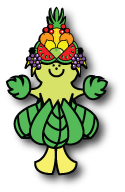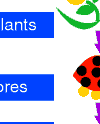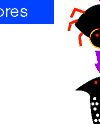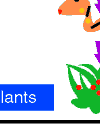| 1 | 2 | 3 | 4 |
| Works cooperatively with others in a group. | Rarely provides useful ideas when participating in the group. May refuse to participate. Provides work that usually needs to be checked/redone by others to ensure quality. Does not try to solve problems or help others solve problems. Lets others do the work. Rarely focuses on the task and what needs to be done. Rarely listens to, shares with, and supports the efforts of others. Often is not a good team player. | Sometimes provides useful ideas when participating in the group. Provides work that occasionally needs to be checked/redone by other group members to ensure quality. A satisfactory group member who does what is required. Does not suggest or refine solutions, but is willing to try out solutions suggested by others. Focuses on the task and what needs to be done some of the time. Other group members must sometimes remind to keep this person on-task. Often listens to, shares with, and supports the efforts of others, but sometimes is not a good team member. | Usually provides useful ideas and high quality work when participating in group projects. A strong group member who tries hard! Refines solutions suggested by others. Focuses on the task and what needs to be done most of the time. Usually listens to, shares with, and supports others in the group. | Routinely provides useful ideas and work of highest quality when participating in group projects. A definite leader who contributes a lot of effort. Actively suggests solutions to problems. Consistently stays focused on the task and what needs to be done. Listens to, shares with, and supports others in the group.
|
| Uses Internet web sites to locate information about food chains and habitats. | Needs assistance or supervision to use suggested Internet links and/or to navigate within these sites.
| Occasionally able to use suggested Internet links to find information and navigates within these sites easily without assistance.
| Usually able to use suggested Internet links to find information and navigates within these sites easily without assistance.
| Successfully uses suggested Internet links to find information and navigates within these sites easily without assistance. |
| Plans a possible food chain for your chosen habitat. | Includes a description of the habitat, the native animals and plants. Cannot make a simple food chain. | Includes a description of the habitat, native plants and animals, a simple description of a food chain based on limited research. | Includes a detailed description of the habitat, many animals and plant life that can be found, creates a good food chain from more extensive research. | Includes a more advanced and detailed description of the habitat, gives an annotated description of the food chain as well as pictures, all based on extensive research. |
Uses a word processing application to write, edit and revise work to standard setting.
| Makes limited use of paragraphs. Uses a spell check and thesaurus appropriately. Edits work to a limited degree. | Enters text in paragraph form. Uses a spell check and thesaurus appropriately. Edits and revises work.
| Enters text in paragraph form. Uses a spell check and thesaurus appropriately. Moves blocks of text so that the report is in the best sequential order. Edits and revises work into a standard setting document.
| Enters text in paragraph form. Edits text. Uses a spell check and thesaurus appropriately. Moves blocks of text so that the report is in the best sequential order. Edits and revises work into a standard setting document.
|
| Uses a drawing and painting application to design a food chain. | Draws and paints a very simple food chain, does not annotate it, shows beginner skills in drawing programs.
| Draws and paints a food chain, annotates part of it, shows more skill in the use of a drawing program.
| Draws and paints a detailed food chain, annotates all of it, shows considerable skill in the use of drawing program.
| Draws and paints a detailed food chain, annotates it with good describing words, shows expert skill in the use of drawing programs by creating a slide show or animation.
|
Shares information as an oral presentation.
| Avoids looking at the audience. Speaks in an audible voice some of the time. Speaks in a clear voice some of the time. Speaks with little enthusiasm. Can answer one or two questions posed by the audience.
| Establishes little eye contact with the audience. Speaks in a clear voice some of the time. Voice, facial expressions and body language generate an interest about the topic. Can answer some of the questions posed by the audience.
| Establishes eye contact with some of the audience. Speaks in a clear voice most of the time. Voice, facial expressions and body language generate an interest and enthusiasm about the topic. Can answer a majority of the questions posed by the audience. | Establishes eye contact with the audience at all times. Speaks in a clear voice all of the time. Voice, facial expressions and body language generate an interest and enthusiasm about the topic. Can answer all of the questions posed by the audience.
|
| Creates a book as a final project. | Had little input into the design of the book, did little of the research and illustrations, didn't present to the class orally. Answered no questions from the class. | Was involved in the design of the book, did quite a bit of research, some illustrations, and presented a few facts orally. Answered little or no questions. | Was actively involved in the design of the book, did much of the research, many of the illustrations, and presented much of the book orally. Answered a few questions. | Book's design was directed and conceived, directed where to research for facts, created an animated illustration or slide show, and presented orally to the class, as well as answered most of the questions. |















































